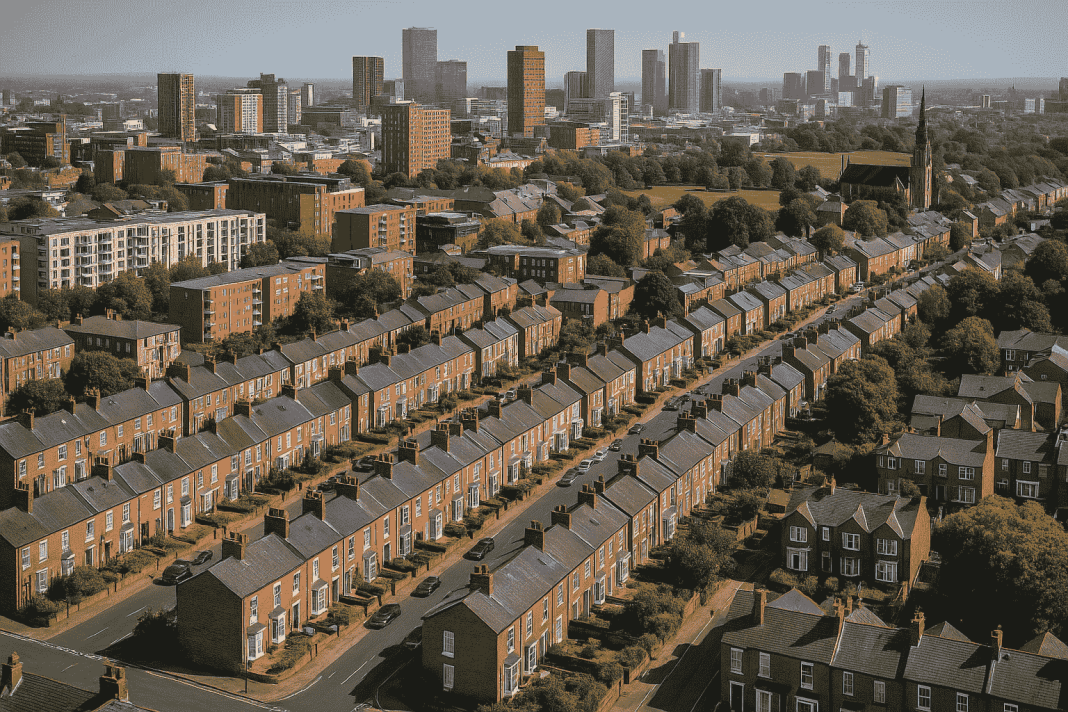Migration housing demand is becoming a defining factor in how the UK’s property landscape evolves. Whether driven by people moving domestically or migrants arriving from abroad, this trend is putting pressure on housing supply, shaping regional markets, and influencing policy decisions. Understanding migration housing is essential for developers, policymakers, and residents alike.
Domestic Migration Housing Demand Reshapes Regional Markets
Domestic movement is one of the main forces driving migration housing across the UK. In recent years, thousands have relocated from expensive cities like London to more affordable and livable areas such as Yorkshire and the North West. This growing trend, sometimes referred to as the “Northern Drift,” has significantly impacted local housing dynamics.
For example, Manchester saw its population increase by 9% between 2011 and 2021, driven mostly by internal migration. With lower property prices and a vibrant job market, cities like Manchester and Leeds are top choices for young professionals. This surge in demand led to a 6% rise in property prices in Manchester alone in 2024.
This trend is not without challenges. While demand increases, housing supply often falls short. Developers struggle to build fast enough, causing bidding wars and driving prices even higher.
How Inflation Impacts UK Property Investment in 2025
International Migration Housing Demand Fuels Urban Growth
Another major contributor to migration housing is international migration. In 2023 alone, the UK recorded over 600,000 net migrants, most of whom settled in large urban centers like London, Birmingham, and Bristol.
These new residents typically seek rental homes or starter properties, leading to increased strain on housing availability. In London, 35% of international migrants enter the private rental sector, escalating rent prices and tightening the market for both locals and newcomers.
International students further amplify the trend. University towns like Sheffield and Nottingham face annual housing shortages as tens of thousands of students arrive, needing temporary accommodation. This often reduces the housing stock available for long-term residents.
Rural Areas and the Effects of Migration Housing
The impact of migration housing extends beyond cities into rural Britain. Between 2020 and 2022, the pandemic triggered a migration wave from cities to countryside locations like Cornwall and the Cotswolds, driven by the desire for space and affordability.
This surge caused housing demand in these areas to rise by as much as 20%. Cornwall’s average home price increased from £250,000 in 2019 to £320,000 in 2024, pricing out many local buyers and raising affordability concerns.
Councils are attempting to respond with affordable housing initiatives, but rural planning restrictions often slow development. Limited infrastructure and protected landscapes further complicate expansion efforts, leaving rural communities under strain.
Rural Housing Challenges – CPRE
Migration Housing Demand and the UK’s Housing Supply Gap
The current migration housing demand highlights significant shortcomings in housing supply. Experts estimate that the UK needs 300,000 new homes annually, yet only 200,000 were completed in 2024. The shortfall is most severe in regions with high migration inflows.
London alone faces a 60,000-home annual deficit. Rising construction costs, planning delays, and labor shortages compound the issue. Even with government incentives like Help to Buy, critics argue these programs benefit buyers more than renters, leaving many without viable housing options.
UK Housing Supply Data – House of Commons Library
Economic Impact of Migration Housing Demand
Beyond physical buildings, migration housing demand has a profound impact on the UK economy. As demand grows, so do house prices and rental costs, contributing to overall inflation. In 2024, housing costs played a major role in keeping inflation at 2.5%.
High housing prices also discourage worker mobility. Skilled professionals may avoid relocating to high-demand areas like London, slowing economic growth in business hubs. On the flip side, high demand drives construction activity, which supported 15,000 new jobs in Manchester alone in 2024.
Still, without adequate housing supply, these economic benefits are unsustainable in the long term.
Migration Housing Demand and What’s Next
The future of migration housing in the UK is being shaped by multiple evolving factors. Post-Brexit immigration policies have already shifted migrant flows, with fewer arrivals from the EU but more from Asia and Africa. This could redistribute demand from traditional hotspots like London to emerging urban areas like Coventry and Leicester.
Internal migration may also shift due to climate change. Coastal areas increasingly prone to flooding could see people relocate inland, further concentrating demand in safer zones. This creates new planning and infrastructure challenges for regional authorities.
Innovation will be key to adapting. Modular homes and prefab construction are being tested in cities like Birmingham to meet the need quickly and affordably. These technologies could offer scalable solutions to keep up with rising migration housing demand.
Responding to Migration Housing Demand
In conclusion, migration housing is not a passing trend it’s a defining force in the UK housing market. Internal migration to affordable cities, international arrivals in urban hubs, and post-pandemic rural shifts all contribute to the pressures we see today.
To meet this demand, the UK must ramp up housing construction, revise restrictive planning policies, and invest in renter protections. Understanding and anticipating migration housing is essential for crafting effective, sustainable housing policies that serve both current and future generations.



